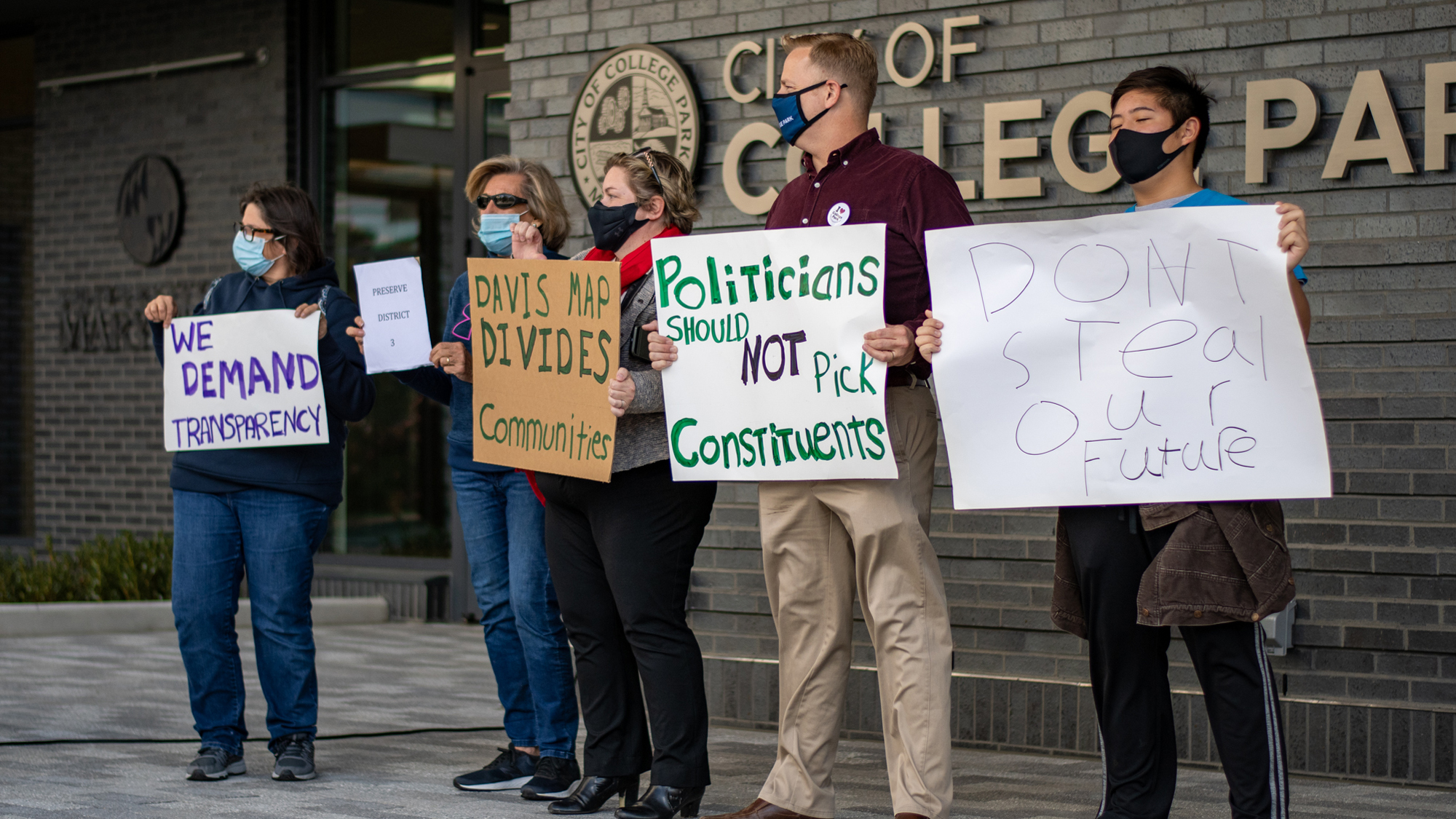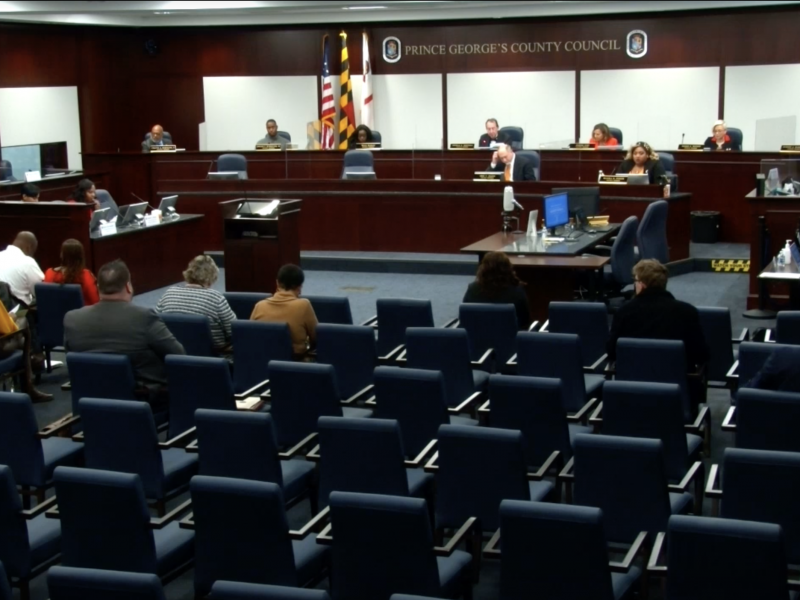Para leer este artículo en español, haga clic aquí.
The Prince George’s County Council voted Tuesday to introduce an amended redistricting map during a meeting on Tuesday.
Over the course of the past few months, the redistricting commission has held public hearings to garner feedback on a proposed map plan that would generally keep voting districts in Prince George’s County the same.
Last Thursday, the drawing of those districts changed when the council voted 6-4 in favor of considering the new map that drew fierce backlash. The map, which was designed to create a Latino majority in one district, prompted outcry because it broke up some geographically similar areas. The College Park City Council voted unanimously to send a letter in opposition to the changes.
A letter from the University of Maryland expressed their desire to stay within the same county voting district as the Discovery District, county council member at-large Mel Franklin said. The new map shows District 3 reaching most of where the university is located, and as a result, South Laurel is now completely contained in District 1.
Amid claims that there would be no public input, Franklin, who was part of a 2011 redistricting process, said the map will not be implemented without public input.
[Local leaders protest swift changes to proposed Prince George’s County redistricting map]
“We are following the process to the letter of the law,” Franklin said. “We did it 10 years ago, we’re doing it again now. And we’re doing that with actually more transparency quite frankly than we did 10 years ago.”
County council member Dannielle Glaros pointed out that IonQ, a company a part of the Discovery District, would be separated in another district with this new map, despite the university’s wishes.
Additionally, Glaros said pulling neighborhoods away from adjacent establishments could marginalize and disenfranchise residents. Glaros said Old Town is very active when it comes to the university and Discovery District, but it would become isolated in this map plan.
“I would just argue that this proposal amendment in front of you severely alters the relationship, it is not supported by the university based on their letter, it is not supported by the city and it is not supported by all of the municipalities in District 3, which have already sent a letter,” Glaros said.
In response to Glaros, District 4 county council member Todd Turner said that this would not sever any relationships, because currently College Park is divided into two county districts.
[As Prince George’s considers zoning rewrite, community members push for affordable housing]
“As human beings we are comfortable where we are but this entire process of redistricting is to reflect the changes that are going on demographically and otherwise in Prince George’s County,” Turner said.
College Park Mayor Patrick Wojahn echoed Glaros’ sentiments in reaction to the session. Tuesday’s map is worse than that of last week, he said. The difference here, he said, is that it divides the region even more, splitting downtown College Park from residential areas.
“It doesn’t make sense in terms of how it places communities together and I think that only hurts our ability as a city and as a community to develop a cohesive strategy for economic development and job creation in College Park,” Wojahn said.
City council member Fazlul Kabir has mixed feelings about the new map. On one hand, the county council listened and put the university’s campus within the boundaries of District 3, Kabir explained. On the other hand, they did not listen to the request entirely, because the Discovery District is still within District 1, Kabir said.
Another city council member, Kate Kennedy, described the situation as “despicable.” Kennedy expressed the redistricting process should be ethical and moral, and above all — transparent. To her, the new map plans are really about politicians trying to choose their constituents.
“I don’t think it could be any more obvious at all that they’re rigging this election,” she said.
District 5 county council member Jolene Ivey said there had been “red herrings” heard throughout the session, regarding explanations of the redistricting as a result of an increase in population. Ivey argued this was not a “normal democratic process,” as Franklin claimed, and that colleagues would not respond in attempts to negotiate.
“I urge our residents to continue to reach out to their council members, including the at-large members, and express your views on your preferred map,” she said.
The public hearing on the resolution will be held on Nov. 16.
Grace Yarrow contributed to this report.



